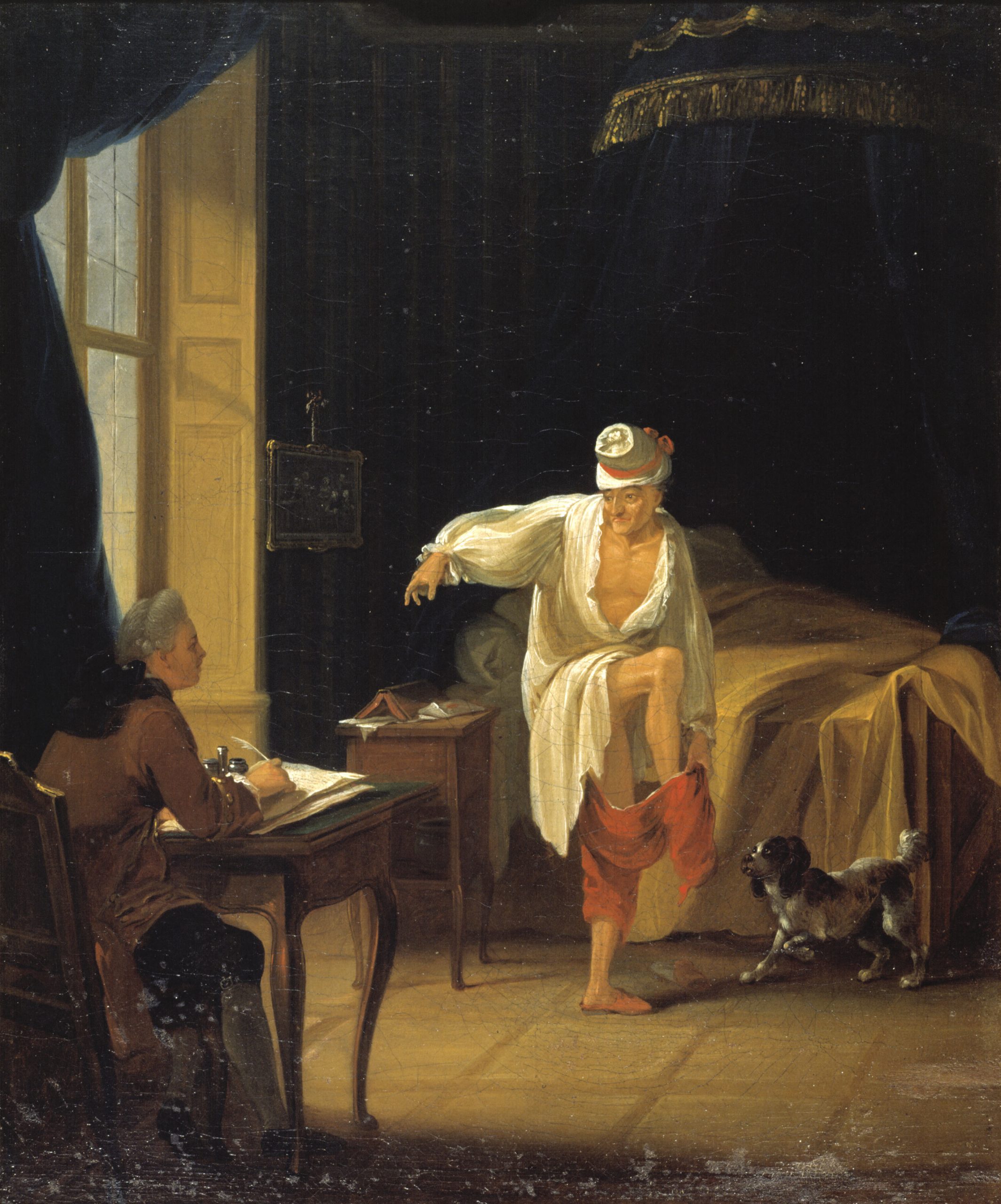Jean Huber (1721–1786) was a multifaceted figure of his time—an accomplished painter, silhouettiste, politician, and author. Yet his most intriguing contribution was arguably as an early theorist of celebrity culture. Huber understood that celebrity was not merely about fame; it was an invitation to engage with and play upon a public figure’s image. He believed that introducing “a bit of ridicule” into depictions of famous individuals could captivate public interest without diminishing their overall prestige. This nuanced understanding of fame and public perception laid the groundwork for a new way of thinking about celebrity.
One of the most prominent examples of Huber’s ideas in action involved the 18th-century French philosopher and writer Voltaire (1694–1778), one of the first modern celebrities in the truest sense. Voltaire’s life and work attracted widespread attention, and he was forced to endure the peculiar and sometimes intrusive forms of public interest that came with his fame.

Huber created a series of unconventional and often humorous paintings portraying Voltaire in everyday, and occasionally awkward, situations. These images depicted the celebrated thinker engaged in mundane activities such as drinking coffee, playing chess, taking leisurely walks, or even struggling to pull on his pants in the morning while dictating to his secretary.
These paintings were a sensation, quickly gaining international fame. Copies and engravings of them were widely produced and sold, amplifying their reach. Voltaire, unsurprisingly, was not amused by these portrayals, as they chipped away at the solemnity he preferred to maintain. However, Huber’s approach was deliberate and deeply rooted in his conceptual framework of celebrity. By adding a touch of ridicule to Voltaire’s public image, Huber humanized the philosopher while ensuring that his prestige remained intact, thus exemplifying his theory of celebrity as both spectacle and engagement.
 Further reading:
Further reading:
Antoine Lilti: The invention of celebrity (John Wiley & Sons 2017)
 Hungarian version/Magyar változat
Hungarian version/Magyar változat